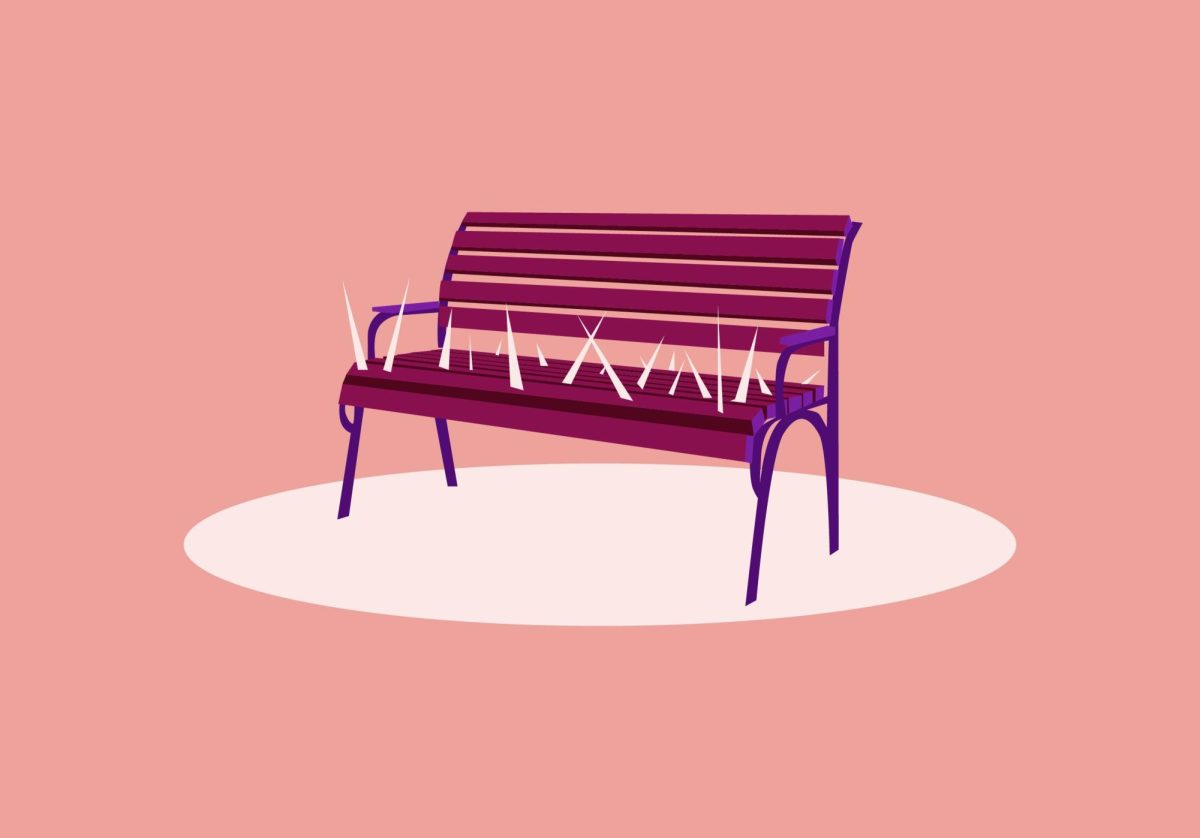Public space isn’t quite so public anymore, and hostile architecture is to blame.
Hostile architecture is an urban design strategy invoked during city planning stages to police who is allowed to be where.
This practice gained momentum during the era of prominent segregation, where exclusionary design could be seen in the implementation of dead-end roads, one-way streets and bollards to prevent citizens from moving between predominantly white neighborhoods and those of color.
An important example comes from New York City, where the construction of a bridge leading to a beach in Long Island intentionally barred the passage of buses, making the bridge only accessible to car owners who were often of a wealthier class, according to Chango Cummings, adjunct faculty member in the University of Minnesota’s College of Design.
Cummings defines the practice of hostile architecture as inherently anti-poor, anti-homeless and anti-Black, allowing the policing and restriction of movement by ripping away the very ground we walk on.
“It is a means of deterring poor homeless folks of color from being in public space. From just resting and existing in the public realm,” Cummings said.
Through hostile architecture, leisure is commercialized and held out of the reach of many, making the right to simply exist in public spaces only available to wealthy, white, housed people.

Now more than ever, anti-homeless structures are visible in cities across the United States. Metal spikes and bars divide benches to prevent homeless populations from sleeping there. Fences and walls surround “public” buildings to restrict who can access them.
Hostile architecture can be something as simple as a lack of seating in a public space, as even the absence of rest spaces can effectively communicate the city’s message to local populations: don’t make yourself at home.
In major metropolitan areas like Minneapolis, hostile architecture is accelerating at rapid speeds, leaving homeless populations without a place to stay during the winter months. Slanted benches at Metro stations across the state fail to give homeless Minnesotans a space to rest and escape the cold. Seat dividers prevent homeless people from sleeping on them.
Negligible heating in transit stations leaves them victims of the elements. On any given night, 7,940 Minnesotans struggle with homelessness, and the failure of these public spaces to remain public is the driving force behind the dangerous conditions they are subject to daily.
It is more important than ever for public spaces to remain public. As homelessness hits record highs in Minnesota, shelters are no longer able to house everyone who needs it. Hennepin County shelters are at capacity, forcing them to turn away 7,000 unhoused Minnesotans in 2022.
Further, encampments are increasingly being cleared out by city officials and crews, as they claim these settlements are prohibited by city statutes. The reality is becoming adamantly clear: homeless Minnesotans have nowhere to go.
“What we are seeing is the failing of a system due to economics, social and political factors designed to displace people,” Cummings said. “This is only one example of the city trying to battle the symptoms of a larger issue.”
Policies in Minneapolis are focused on treating homeless populations as an eyesore, rather than recognizing the cyclical, often inescapable nature of the crisis itself. Restricting public space through hostile architecture, especially at a time when current systems of help are already failing, does nothing but create a greater stigma around homelessness all while pushing the population into more danger.
While hostile architecture’s proliferation continues in Minnesota, advocacy against this problem has become all the more important.
The dehumanization of homeless populations through restricting their right to simply exist cannot be ignored. This issue only emphasizes the importance of our voices to make architecture more inclusive in Minneapolis, in hopes that public places remain public after all.















